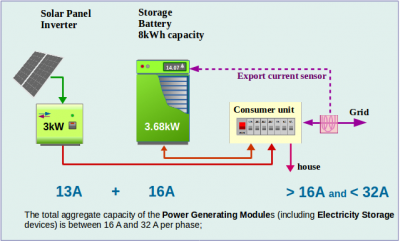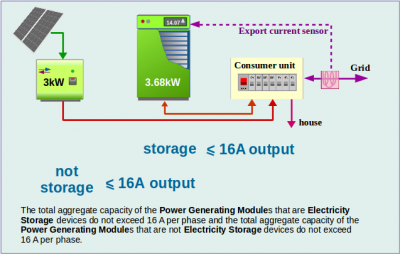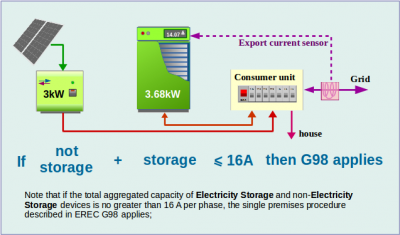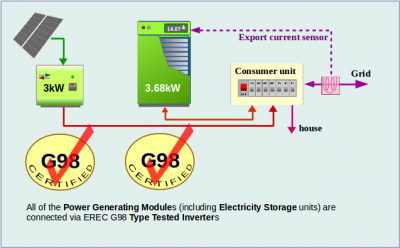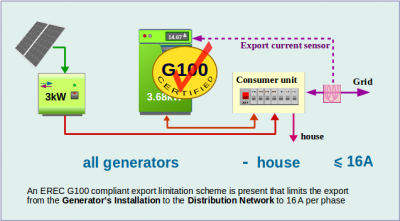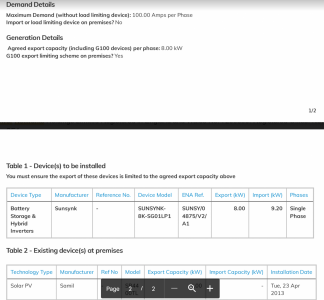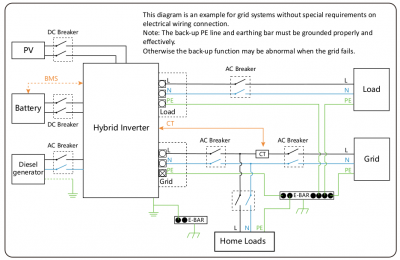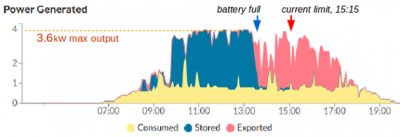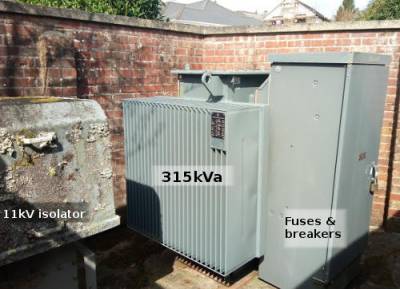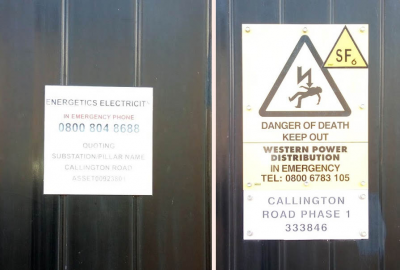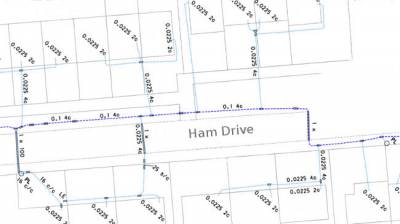Posted by: @onevoltSo as long as the grid tied inverter is G98 or G99 certified then it shouldn't matter what the battery is?
Not quite.
If the inverter is an off-grid type then it only requires CE safety-level certification.
G98 is only for devices that can export.
These regulations can be difficult to understand.
I have had the benefit of direct conversations with engineers who write and implement the grid-connections rules.
They can't offer that to everyone!
So please keep asking for clarifications, or mention specific inverters/batteries/chargers if you wish.
G99 is required when there is more than one G98 device to be installed.
Save energy... recycle electrons!
Here's my own graphical interpretation of the conditions under which the G99 Fast-track process can be used:
The Electrical Networks Association (ENA) has published a downloadable guide to G98 available from their Resources Library. The process is simpler than G99 Fast Track and covers the majority of small domestic installations.
However, if your site has a total export capacity above 16A per phase, then you must proceed with G99.
There are two further criteria required for the Fast Track process:
If the criteria above are not met, then the Fast-track scheme cannot be used. A Full G99 Application must be made.
Save energy... recycle electrons!
Ok so maybe a better question would be to the masses that has any one had success and DNO permission in using a DIY battery in a grid exporting setup?
Even if I didn't intend on exporting for now it would be good to have the option for future tariffs that might benefit from being able to do so.
Octopus seem quite active on releasing these new innovative tariffs.
For someone to have succeeded in obtaining a G98 approval, then
- the battery will be DC-connected to the inverter
- the inverter will use some form of 'approved' export-limitation
In which case, there will be lots here who'd like to know which inverter you've used. 🙂
Save energy... recycle electrons!
We have just had permission to fit an 8kW Sunsynk hybrid inverter from UKPN. We have a single phase supply, 100A fuse, existing 4kWp PV with existing 4kWp inverter. I applied with their fast track online form service - I had one email, I replied, they approved - it was quick, took a week or two.
The new Sunsynk has 2x PV input strings - one I'll feed from panels on the garage roof (awaiting planning permission to insulate it and fit panels), the other is for a PV roof on a future garden office. Eventually I'm hoping for 32 off EVE280K cells in the garage, as I've seen others done here, generally DIY, but with an approved sparky to actually connect up to our consumer unit.
The approval for the Sunsynk is on the proviso that it has it has G100 export limit enabled, set to 8kW for the whole house export. Perhaps it was approved quickly as we have V2G, which I will remove when the Sunsynk is installed. Why remove? Because we want a longer range car, this almost certainly excludes V2G. V2G and the Sunsynk would likely fight, really no need for both. Besides, post Covid pandemic, the car is away with Mrs RobL all day these days, so the V2G doesn't work so well!
Thanks @rob1 - Sunsynk is the manufacturer which I expected someone to mention first.
Here's one of their generic connection diagrams
There's a very good introduction to their inverter technology on their website.
Sunsynk have ENA approval for (most of) their inverters, and also their export-limitation strategy.
Beware that they are sometimes a little 'loose' with their terminology.
Eg they mention that there may still be live connections when there's a grid outage, because the inverter is operating in Islanding Mode.
That's a term used in a very specific way in the UK.
All UK-approved inverters must have anti-islanding built in as standard.
It protects technicians from electric shocks when working at substations.
In fact, during an outage, most Sunsynk inverters can keep some 240v AC appliances 'live' by using the battery storage off-grid.
The connection to the incoming grid is not live under those circumstances.
Note also that @robl has obtained consent from UKPN for 8kW supply to the house, however.
Since the inverter is rated 8kW, that's actually zero export to the grid.
As such I can't actually see why it would've mattered if he'd wanted to retain the V2G charger.
That still would've been the only device which could potentially export back to the distribution grid.
Save energy... recycle electrons!
What I asked for, and what I hope they think is happening too, is that we can consume whatever we like up to 100A, and that the overall export from the house is limited to 8kW.
For this to occur, our existing PV would likely be exporting 3.8kW (the most we see in practice), and there'd be barely anything on in the house. The Sunsynk is likely to charge batteries initially, and then export up to 4.2kW when the batteries are full.
I re-read it, and I think you're right @robl
UKPN are actually allowing you a 34A maximum export to the grid. That has the potential to cause some serious losses at the substation transformer.
I don't think this would be granted in most areas.
What can you tell us about your locality?
- housing density
- proximity of substation
- overground/underground cable
etc
Save energy... recycle electrons!
Our area is leafy suburbs, all originally 4 bed 1960s build houses with initially 60A single phase underground cables.
I’m afraid I don’t know how far away our transformer is. There is a likely candidate, but I don’t know the cable route.
I had a go at measuring the line impedance - I have a plug in voltmeter that I put on an extension. Then I plugged a 10A(measured) kettle into a different ring main. I think this should allow me to measure the impedance up to the consumer unit, but exclude our house wiring. It varies by a volt or so over a minute, so I did it a few times, and compared the values with a true rms multimeter as well (within 0.3V) - below is averaged values:
V (off) 244.6Vacrms
V(10A draw) 242.0Vacrms
I think that’s 0.26ohms, so if we did shove 8kW into the mains, the voltage would rise from 244.6V to 253V, which does seem very high. Might be even higher on a sunny day, there’s a few round here with PV 😶
The specification for the UK mains distribution grid is 230v, minus 6% to plus 10%
which equates to 216 - 253v
Equipment certified to G98 for grid-connection must cease export when these limits are reached.
It must continue to check the grid-voltage, then wait a random period of time (about 60secs) before reconnecting.
Here's that situation occurring when a Growatt 3.6kW string inverter breaches the upper voltage limit and the storage battery is already full:
And here's the matching timeline from that PowerVault storage battery which shows the inverter detaching itself (effectively discarding the PV generations)
Does the house still have a 60A Service Fuse?
Are the underground cables the original ones from the 1960s?
You should be able to walk around the neighbouring roads and easily find the substation.
It will typically be supplying 100-150 houses in that sort of urban location.
It will be ground-mounted (not up a pole!) and could be in a small compound open to the air, or housed in a building of brick/concrete.
The entrance will have a sign which usually gives the transformer's number and the locality name of the substation.
There's also a telephone number to phone in case of emergency, which is usually 105 (or ending 105)
Save energy... recycle electrons!
We have a 100A fuse now, and 25mm^2 tails. It was originally a 60A fuse. I think the cable into our property was installed during house construction in 1963 - it comes up inside the house, and we have old parquet flooring that looks undisturbed.
The distance to the local substation is 255m as the crow flies, and following the roads/pavements it is 570m. I've seen the pavements dug up around here, gas + water + fibre optics definitely run along them, so I expect electricity does too.
Now it's sunny and a few houses (including ours at 3.3kW) will be generating - it's 11:40am. The voltage I measure at the consumer unit is 250.0 to 252.2 Vacrms, and still around 0.27ohms. Of course both my meters could be out. We have a calibrated Fluke 87V at work, I'll compare this with the other two I have. The calibrated unit doesn't seem stellar though - £700 and it's cal accuracy is 0.7% + 4digits, which I think is still +/-2.1Vacrms. I looked at the spec of my true rms meter, it should be +/- 1.3V, but it's 5 years old and not calibrated.
I'm not aware of our solar inverter dropping out ever; we have an "eco-eye" monitor on it which records to an sd card. Sometimes I look at the data recorded, and I've never seen it cut out.
Should I be worried about this high voltage? It seems like I should.... but then doesn't the dno monitor this, and choose the best transformer tap? The mains voltage range allowed is 216 to 253, a 37V range. I'm allowed +100A to "-"34A, a 134A range. Using the impedance we have, that gives a voltage range of 134A*0.27ohms = 36V. Perilously close, even neglecting neighbours synchronising with us! It's amazing that it all seems to work ok tbh.
I don't have the distribution maps for UKPN's region, but I've extracted this from a 1960's housing estate in one of NGED's areas.
I have consent from NGED to reproduce data belonging to them, but for obvious reasons, I've anonymised this map.
You won't find any Ham Drive bearing resemblance to the above!
Single-phase feeds are in light blue. Most are marked 0.0225 which is the cross sectional area of the copper conductor in square inches.
That equates to 14.5mm² and you'll see a house at bottom-left where the underground supply was later replaced with a cable identified as 16mm².
Any meter upgrades to those houses would still be fitted with 25mm² tails, just as yours has.
The map doesn't show the current size of the service-fuses, but they would all have been 60A when the houses were built.
The 3-phase connection back to the local substation is in dark blue, marked 0.1in² which is 64mm².
I'm commenting on this in a topic about DIY home energy storage because it illustrates the range of factors which a DNO evaluate when granting consent for inverters which can export.
My own view is that the UK should also have a system to approve off-grid battery storage which does not export if there is a facility to recharge from the grid.
It's not very much different to the LCT Application to install an EV Charger.
Connections are very rarely refused, but such data enables DNOs to prioritise cable replacement in streets where the loads most exceed the original cable specification.
Save energy... recycle electrons!
- 26 Forums
- 2,396 Topics
- 54.3 K Posts
- 363 Online
- 6,077 Members
Join Us!
Worth Watching
Latest Posts
-

RE: Fan is clipping ice build up from the front of unit.
In fairness, @toodles, I'd be more concerned if it beca...
By Majordennisbloodnok , 16 minutes ago
-

RE: Setback savings - fact or fiction?
Just as an aside, I notice your graph has come from Hom...
By Majordennisbloodnok , 21 minutes ago
-

RE: Running from backup generaor in powercut?
It seems the Microsoft minute has been usurped by the S...
By Majordennisbloodnok , 45 minutes ago
-
RE: Recommended home battery inverters + regulatory matters - help requested
That doesnt seem quite the same description as the one ...
By JamesPa , 1 hour ago
-
RE: Running my new Nibe ASHP efficiently
I'm new to the forum. Did you get a reply to this last ...
By Mike @ Camelot , 1 hour ago
-

RE: ASHP Energy Consumption: Aira 12kW heat pump
@grantmethestrength MCS requirements for DHW capacity h...
By Toodles , 2 hours ago
-
RE: New Mitsubishi Ecodan 11.2kW installation - L9 errors and maybe more
Great to hear! I just figured this out a day or tw...
By anotherdaveuk , 3 hours ago
-
RE: Help me keep the faith with my air source heat pump installation
@adamk I'm observing my own system at low temperatures ...
By dr_dongle , 8 hours ago
-

RE: Free Ecoheat Heat Pump Install
@deltona Yes older houses are problematic like that, bu...
By bontwoody , 1 day ago
-
RE: Radiator sizing sanity check
As I mentioned early on the cost of supplying and fitti...
By JamesPa , 1 day ago
-
RE: Advice for a novice on Mitsubishi Ecodan 6kW
I hadn't spotted that there were two pumps in the UFH (...
By JamesPa , 1 day ago
-
RE: Electricity price predictions
Great point, one of the key ones in my chat with Octopu...
By Batpred , 2 days ago
-

RE: New Fogstar 15.5kWh upright solution
Let me point out that there are many Chinese suppliers ...
By Transparent , 2 days ago
-

RE: Weather compensation- why you should use it
@majordennisbloodnok — The Two Ronnies Mastermind sketc...
By cathodeRay , 2 days ago
-
Just realised that this image of the cylinder cupboard ...
By Sheriff Fatman , 2 days ago
-

RE: Rodents! A word of warning for heat pump owners
Two thoughts: 1: Let's ask @david-s if Primary Pro in...
By Transparent , 2 days ago
-
RE: Solis S6-EH1P8K-L-PLUS – Why I Chose It and What I’ve Learned So Far
In the diagram below, I describe my understanding of th...
By Batpred , 2 days ago
-
I need to have a look out for it. I know IBM feeds some...
By Batpred , 2 days ago
-
-
RE: Daikin Atherma ASHP Cycling 6 Times an Hour?
Thanks for your reply. Yes that's a good idea to try a...
By John Marshall , 2 days ago

